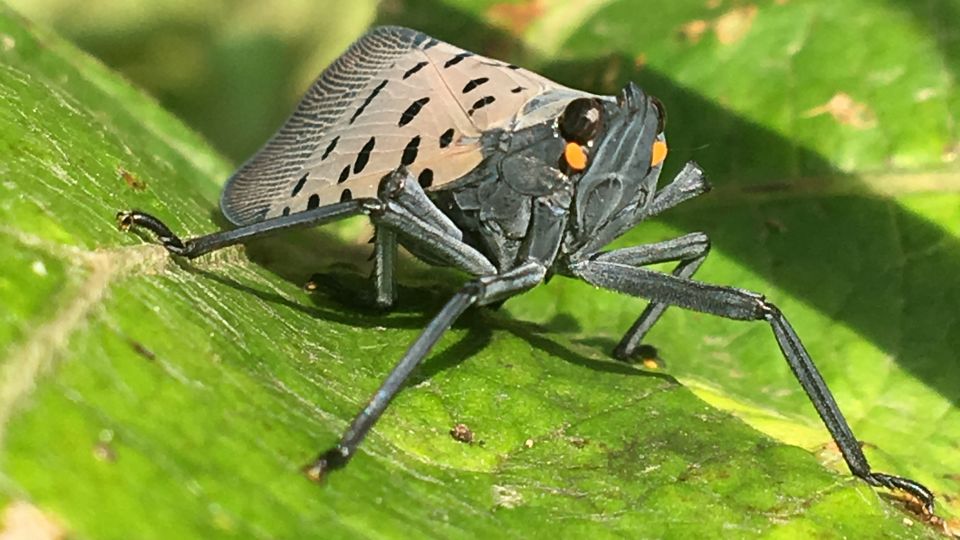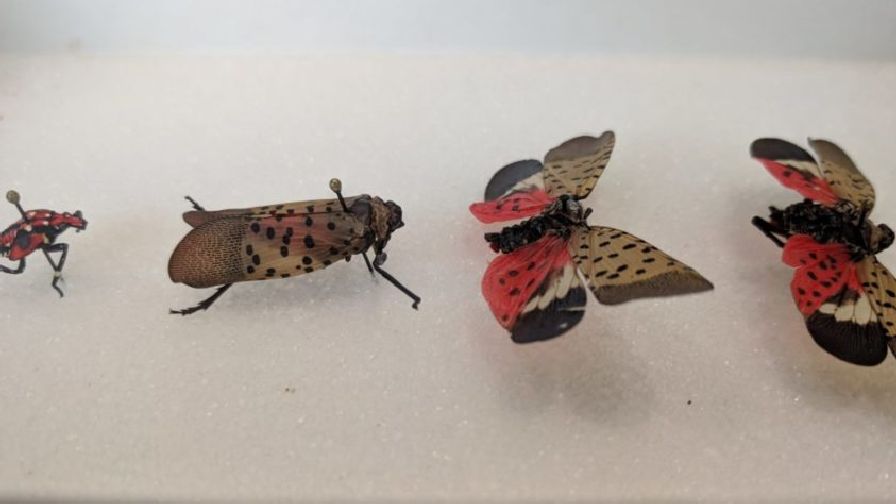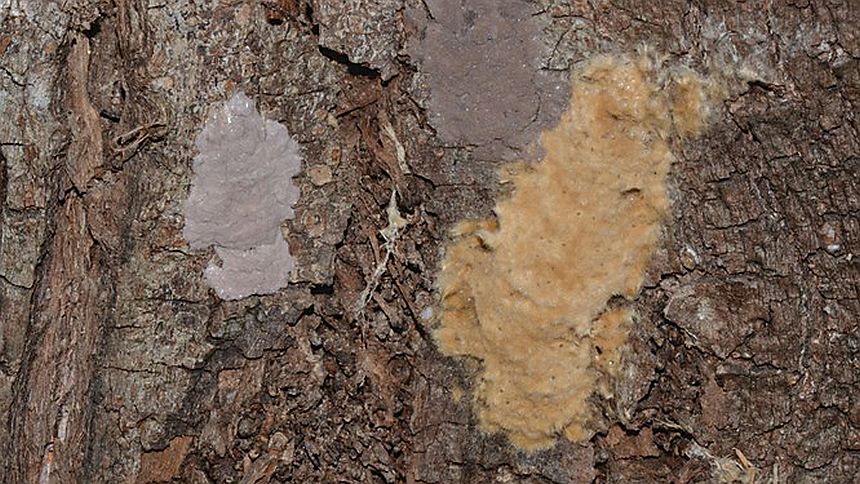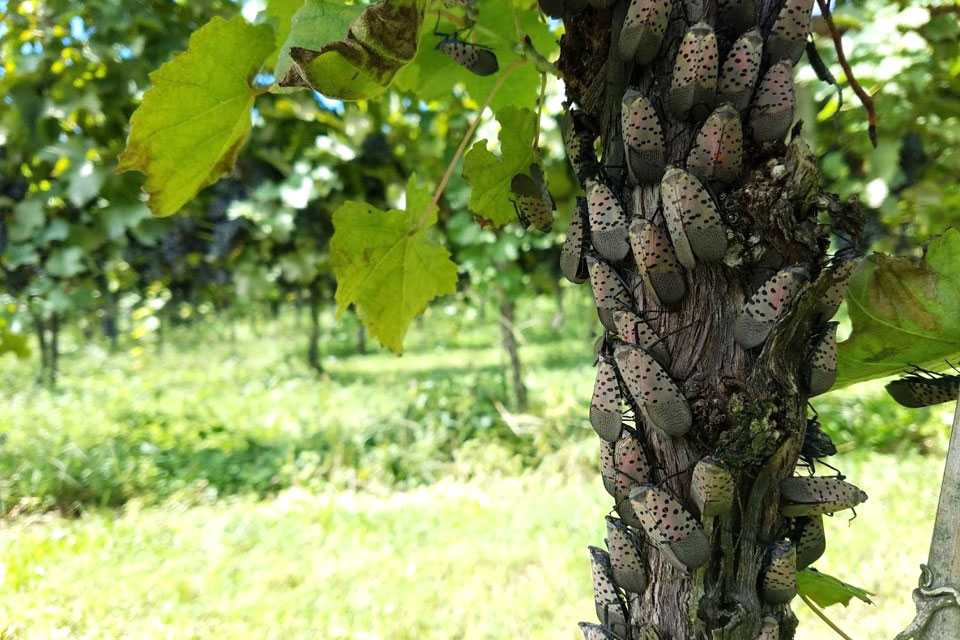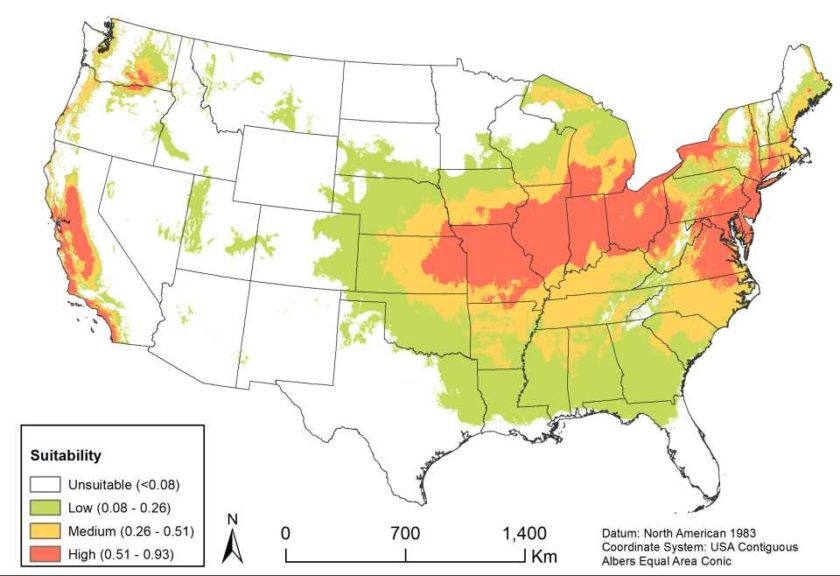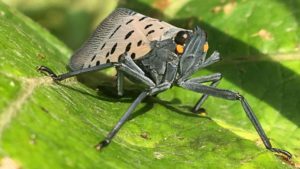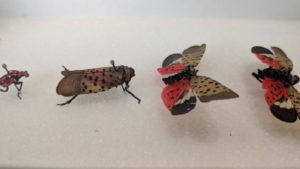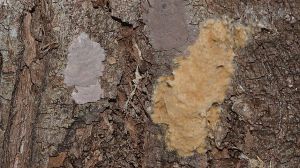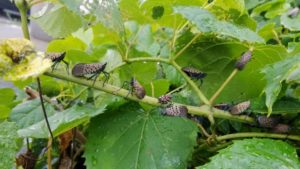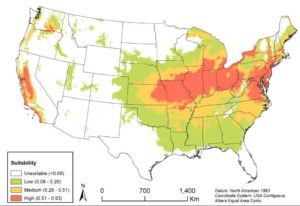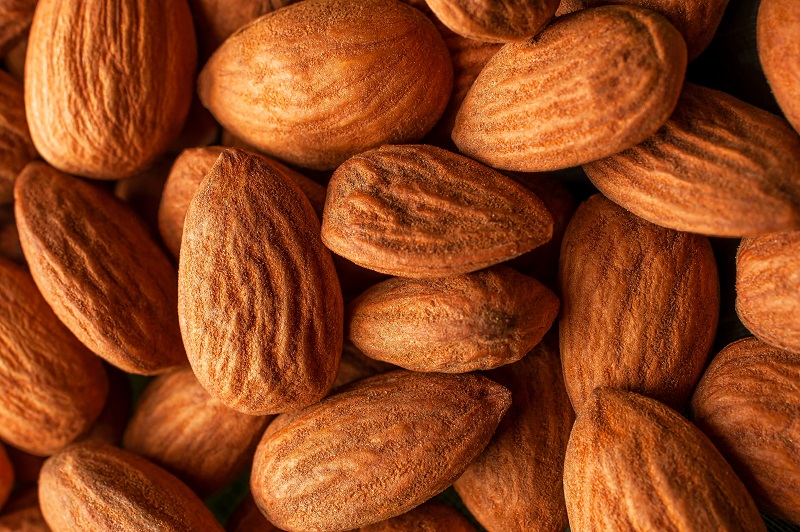Considering the Spotted Lanternfly Threat to California Grapes
The weird ways we absorb information these days can lead one in interesting directions. For instance, I oddly love to see the reports of invasive pests across the country by Eastern and Midwestern TV reporters. Though I think I’ve been watching a few too many lately, as it seems to me they’re glorifying the admittedly picturesque adult spotted lanternfly (SLF).
No doubt, as someone who’s not much for fruit pests, I’m biased toward the ‘kill ‘em all’ camp. Any pest that’s an enemy of fruit is no friend of mine, and they might be pretty, but they feed on several fruit crops. They love grapes, in particular, and that’s why they’re feared in California, where I reside. So far, the pest has invaded 17 states, though the farthest west the penetration has carried has been to Indiana.
We Californians sincerely hope it won’t travel across the plains, the mountains, and the deserts to make its way to California, but I have no doubt it will. When I started talking about these invasive pests a quarter-century ago to entomologists — still my favorite scientists to interview in the fruit business — one thing they told me sticks: The bugs always win in the end; all we can do is fend them off enough to produce a crop.
Think about all the other pests that have invaded this country in the past few decades. Since the turn of the millennium, the parade of invasive insects has really been remarkable. I won’t count them all up, but just think of all the potentially dangerous insects that have arrived in this country in that time.
Nearly all the insects were from Asia, which makes sense, as world trade has exploded, especially U.S.-Asian trade. Nearly all were originally found in the U.S. near the Port of Philadelphia, near Berks County. This part of the country is not exactly awash in specialty agriculture, so I guess the news reporters back there should be given some slack regarding these new pests.
There has certainly been a parade of them through recent years, to wit:
Spotted wing drosophila (SWD), which remains an extraordinarily difficult pest for growers of small fruits, particularly late-season berries, to deal with as SWD can be so pervasive. The pest is so difficult that many growers of late-summer and early-fall berries have given up. The chance of a consumer finding one of the pests’ growing offspring — a maggot — in a piece of fruit is too great, considering the high prices fetched by berries.
Brown marmorated stink bug (BMSB), which, while not quite the threat SWD represents, is quite a nuisance. It invades in great numbers, and while it doesn’t lay eggs in the fruit, it will cause damage, especially to its favored fruit, peaches. It’s also extremely adaptable and is now found in more than 40 states.
Spotted lanternfly (SLF) is the most recent pest to join this list, though almost certainly not the last. The problem is SLF is so pretty, it gets a lot of news coverage, and you hate to see such a notorious pest glorified.
However, I am confident California grape growers are up to meeting this most recent challenge of SLF. It’s critical that growers make the public aware of their battle with SLF because a common host of the pest is tree of heaven, which is pervasive in the Golden State. Fortunately, wine has a large profile in society, so I’m confident the industry — through associations such as the California Association of Winegrape Growers and the Wine Institute — will stand fast.




